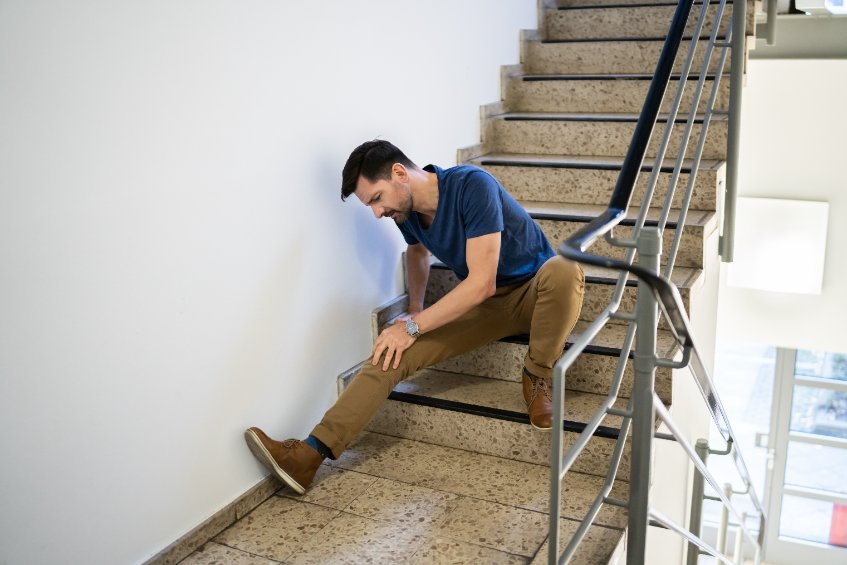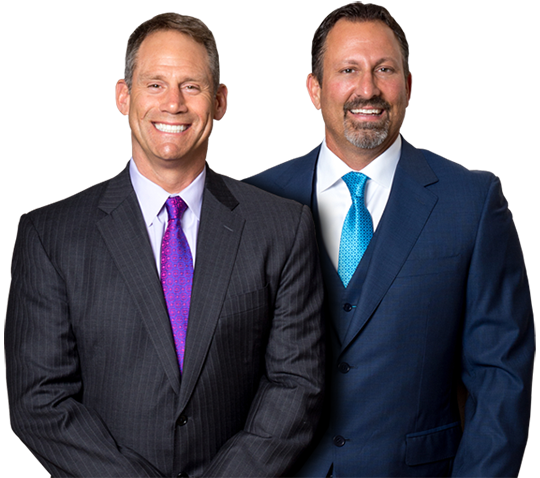
The National Safety Council (NSC) urges employers to promote safety and avoid accidents every June as part of National Safety Month. The group was founded to raise awareness about the high rate of workplace accidents and to educate workers about the risk of workplace hazards. Falls are the second-most common cause of unintentional injury-related deaths. The Seattle slip and fall personal injury attorneys at Lerner and Rowe aim to raise awareness about slip and fall workplace injuries.
Tips for Employers to Prevent Workplace Slip and Fall Accidents
A slip and fall accident occurs when you lose your balance while walking on a slick, uneven, loose, or unstable surface. Slip and fall injuries range from small cuts and bruises to devastating catastrophic injuries. Slips, trips, and falls can be prevented by taking proactive measures to manage your office environment and keep your staff and customers safe. The following are ten suggestions for reducing the risk of tripping, slipping, or falling at work:
- Keep walkways free of debris: It’s easy to lessen the risk of harm by keeping walkways uncluttered. An unobstructed path lessens the risk of an employee tripping over an object and creating a serious slipping hazard.
- Install handrails and banisters: Stairs are a popular spot where workers trip and fall, prompting extra care to keep them safe. Your stairwells should be clean of clutter and unattended items. Make sure to secure any loose carpet or rugs on stairs and install reflective tape on the top and bottom of the stairs.
- Organize cords: Cords from electronics can be messy and can create both obstacles and tripping hazards for customers and employees alike. To hide cords, run them behind walls or under carpets. Avoid running cables across walkways by placing outlets, internet connections, and phone jacks in easily accessible locations.
- Provide adequate lighting: Providing sufficient lighting in and around the workplace can reduce the risk of employees or customers slipping or falling. Steps and other dangers are often obscured by darkness or shadows. You can lessen the likelihood of someone tripping and falling by installing lighting such as spotlights.
- Install signage: Installing clear and well-placed signage in areas where falls are likely to occur can bring attention to these areas and reduce falls. The proper signage can alert people to the hazards of a dangerous step, gap, uneven terrain or loose debris. Reflective tape can also be used to identify trouble areas.
- Have step stools and ladders readily available: Ladders and step stools can help lessen the risk of a fall by making it easier for workers to get to high places. Having stools and ladders available decreases the likelihood that employees will use unstable chairs, workstations, or tables to get to high places.
- Repair damaged floors: It is important to inspect all flooring and outdoor pavement for cracks and holes. This includes the parking lot as well. Place warning signs in and around any locations that need to be repaired. Keep signs installed until the repair is made.
- Use non-skid rugs: Rugs with non-skid backing can help prevent accidents on tile and hard floors. This is a cost-effective and simple remedy for slick floors, but make sure to include non-skid padding underneath the rug to keep it from slipping out of someone’s feet.
- Clean up spills ASAP: The sooner you clean up a spill, the better. Some contaminants, if allowed to penetrate the floor, might actually make the surface more slippery even after cleaning. Immediately post warning signs and begin the cleanup process after a spill occurs.
Tips for Employees to Stay Safe at Work
Slip and fall accidents can happen anywhere. Even desk jobs can be dangerous if the area isn’t maintained and safety measures aren’t followed. Employers must offer a safe workplace, but employees can prevent accidents with these guidelines.
- Follow safety procedures: Safety procedures are put into place to help keep you and your co-workers safe. Pay attention and take notes when someone is giving a presentation, reviewing protocols, or when doing a new task at work. Follow all instructions and don’t skip steps or safety measures to finish something quicker. A simple mistake can have large consequences.
- Don’t operate any equipment you aren’t authorized to use: This might seem like common sense, but it’s still possible for someone to bite off more than they can chew at work. Operating equipment you aren’t familiar with is an ill-advised mistake that can hurt yourself and others.
- Wear the proper footwear: Certain environments like kitchens and factories require specific footwear, like steel-toed boots and non-slip shoes. Wear the proper footwear to help prevent slips and falls.
- Report unsafe conditions: Workers may be hesitant to report unsafe conditions to their supervisors for fear of repercussions. This isn’t safe for the workplace and may lead to an accident or harm—it’s best to report harmful conditions to mitigate risks immediately.
Call the Seattle Slip and Fall Attorneys at Lerner & Rowe
To help prevent slips, trips, and falls in the future, it is vital for property owners and employers to do regular assessments of work environments. It’s also important to bear in mind that paying attention to potential dangers can help you keep your employees and customers safe.
If you or a loved one have been injured in a slip and fall workplace accident because of negligence, call Lerner and Rowe Injury Attorneys today! The Seattle workplace slip and fall attorneys on our team will fight for you and ensure you’re taken care of. Call our Seattle office at (206) 333-4400, or submit the online case review form to start your free case evaluation.
The information on this blog is for general information purposes only. Nothing herein should be taken as legal advice for any individual case or situation. This information is not intended to create, and receipt or viewing does not constitute, an attorney-client relationship.



